ATI3 - Development of cosmetics formulations and new products for skin regeneration using collagen hydrolysates
Objectives
O5 – Develop a new formulation based on the bioactive collagen hydrolysates for biomedical applications.
ATI3
This activity aims to develop formulations for biomedical applications. The therapeutic/cosmetic formulations will be based on the development of emulsions since they allow a controlled delivery and an optimal dispersion of the active ingredients in the different layers of the skin. The formulations to be developed in this project will be prepared by incorporating collagen peptides into the emulsion droplets in different proportions.
ATI 3.1 - Formulations for biomedical applications
Since the earliest stages of civilization humans apply substances to the skin as medicinal agents or cosmetics. While the empiric knowledge of skin permeation has thousands of years, the transdermal concept is relative new (appeared on the Merriam Webster dictionary in 1944). Skin is involved in several process, like permeation. These features make transdermal/topical application of therapeutic formulations a good alternative to oral delivery and to hypodermic injection. The formulations of the therapeutics/cosmetic formulations will based on the development of emulsions, as they allow a controlled delivery and optimized dispersion of active ingredients into the different skin layers. An emulsion requires, an oil, water and emulsifier. Due to the lack of toxicity proteins can be used as emulsifying agents, like β-lactoglobulin which has the ability to form 3 dimensional structures. The oily phase of the emulsion can be composed by essential oils that are naturally derived aroma compounds, with wide-spectrum biological activities28,29, such as antioxidant, anti-inflammatory, anti-allergic, and anticancer effects30. Moreover, the use of natural oils has another advantage, they can act as skin permeation enhancers. So, the formulations to be developed on this project will prepared by the incorporation of the collagen peptides into the emulsion’s droplets in different ratios. The advantage of the use of emulsions is that the carrier itself has a beneficial effect on the skin. There are several proteins and natural oils that can be used. In this project is predicted to use β-lactoglobulin, as it is a by-product of the cheese industry (low cost) and essential oils like, Niaouli Oil. This oil has shown to be more effective as a skin permeation enhancer than orange oil. At the end of this task, it is expected to have skin formulations, based on natural components incorporating the characterized collagen peptides. UM is responsible for this task.
ATI 3.2 - Skin Formulations characterization
The interaction between the skin formulation and the skin is very important. This interaction is influenced by the physical and mechanical properties of the formulation. Therefore, upon the preparation of the formulations it is necessary to proceed to the physical and mechanical characteristics. For that the rheology behaviour and texture will be determined using a rheometer and texture analyser, respectively. These analyses will give results regarding, viscosity, shear, consistency, and cohesiveness. In vitro skin diffusion and permeation of the active molecules will be performed using qualitative and quantitative methods. For the qualitative methods confocal raman microscopic, which allow the evaluation of the active molecule distribution into skin substitutes. Regarding the quantitative methods the Franz Cells diffusion cells will be used. At end of this task, it is expected to obtain information regarding the formulation with the best mechanical characteristics and permeation profile. UM will be responsible for the physical and mechanical characterization and Mesosystems will be responsible for the skin diffusion and permeation studies.
ATI 3.3 - Skin Formulations functional characterization
In this project it is proposed to develop a medical device, whether to be used for a therapeutical approach for reepithelization or as a cosmetic formulation. In the case of cosmetic in vivo assessment are not allowed, therefore several in vitro model can be used. For the in vitro studies 3D skin equivalents which have a similar structure as the human tissue, composed by fibroblasts, keratinocytes, and an extracellular matrix. The formulation will be placed in contact with the 3D model skin equivalent and evaluate if fibroblasts are able to produce more collagen in comparison to the controls. Additionally, genes encoding for structural proteins will be assessed by real-time PCRs. The production of inflammatory cytokines will be assessed by immunohistochemistry. Additionally, the 3D skin model will be sectioned and analysed using several microscopic techniques to evaluate the structure of the skin equivalent upon contact with the formulations. It is important to mention that it will be performed and optimization regarding the contact time necessary to observe positive effects on the skin cells. A similar approach will be used to evaluate the potential of these formulations on skin wound healing. At the end of this task, it is expected to have a functional characterization of the formulations developed. UM will be responsible for this task.
Participants
- Mesosystem S.A.
- Universidade do Minho
- UAç
Join our mailing list!
Contact Us
More important than what we have to say about ourselves, is what the customers have to say about us.
So let us learn and contact us!
We create possibilites for the connnected world – Mesosystem S.A.
info@mesosystem.com
Phone
Telephone (+351) 227 347 125 (Call to a national fixed network)
Mobile (+351) 924 188 704 (Call to a national mobile network)
Location
Rua de Júlio Dinis 228, 4050-371 Porto, Portugal






